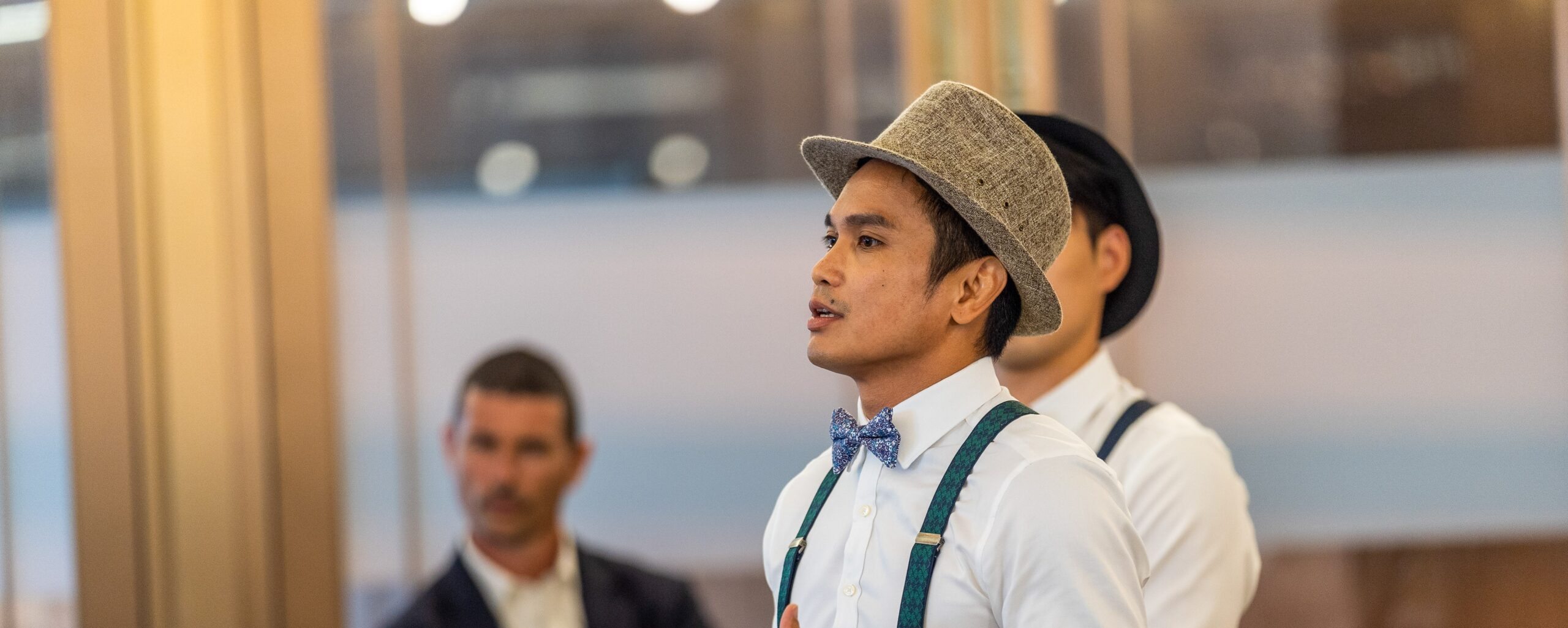Inclusive Leadership
Embracing Diversity to Empower Success
Leadership isn’t about being in the spotlight—it’s about shining a light on others. Inclusive leadership is a commitment to creating spaces where everyone feels valued, heard, and empowered. It’s about recognizing and celebrating diverse perspectives and fostering an environment where people from all walks of life can excel.
My experience on The Apprentice: ONE Championship Edition gave me an invaluable understanding of the power of inclusive leadership. Working with a multicultural, mixed-gender, multigenerational team of professionals from various backgrounds taught me how embracing diversity strengthens collaboration and innovation.
1. Creating Connections Through Curiosity
One of the most powerful tools of inclusive leadership is curiosity. During my time on The Apprentice, I worked with people from different cultures, experiences, and expertise levels. Instead of assuming I knew what was best, I learned to ask thoughtful questions to uncover each team member’s strengths and perspectives. For instance, one of my teammates, a creative director, brought artistic ideas to problem-solving that I wouldn’t have considered from my more analytical approach. By staying curious and open-minded, I was able to see how different viewpoints could align to create better outcomes.
As an inclusive leader, curiosity fosters respect and builds bridges. It shows team members that their contributions matter, encouraging them to share their ideas without hesitation. The result? A culture of trust and collaboration where innovation thrives.
2. Listening and Acting on Feedback
Inclusive leadership goes beyond hearing—it’s about actively listening and responding to feedback. During The Apprentice, our team faced high-pressure tasks where the stakes were high, and tensions often ran even higher. One key moment came when a younger teammate shared that they felt unheard during brainstorming sessions. Recognizing this, I consciously shifted the dynamic by giving everyone equal opportunities to speak and structuring discussions to ensure all voices were included.
The change wasn’t just about team morale; it directly impacted our performance. Incorporating diverse perspectives led to more creative and comprehensive solutions. Inclusive leaders must demonstrate that feedback isn’t just acknowledged—it’s acted upon. This builds trust and reinforces the belief that every voice matters.
3. Adapting to Individual Needs
Working with a multigenerational, multicultural team taught me that inclusivity isn’t one-size-fits-all. During one task on The Apprentice, I noticed that a teammate preferred visual presentations over spreadsheets to conceptualize ideas. By adapting my communication style to accommodate her preference, I not only helped her perform better but also improved the team’s overall efficiency.
Inclusivity requires flexibility—whether it’s tailoring communication styles, offering different ways to collaborate, or accommodating unique needs. Adaptability sends a clear message: every team member’s contribution is valued, and no one has to fit into a rigid mold to succeed.
4. Leveraging Multicultural Strengths
On The Apprentice, I experienced firsthand how cultural diversity can drive innovation. One challenge involved designing a marketing strategy for a global audience. While I initially approached the task with a more region-specific mindset, my teammates from the US and South Asia introduced perspectives that highlighted cultural nuances I had overlooked. This collaboration allowed us to create a strategy that resonated across different markets.
Inclusive leaders understand that diversity isn’t a challenge to overcome—it’s an asset to leverage. By encouraging team members to draw on their unique experiences, inclusive leaders create solutions that are more robust, creative, and relevant.
5. Balancing Strengths Across Generations
Working with a multigenerational team on The Apprentice emphasized the importance of balancing strengths. Younger team members brought fresh ideas and a tech-savvy perspective, while older teammates provided wisdom, experience, and a calm approach to problem-solving. As a leader, I had to ensure that no one felt overlooked due to their age or level of experience.
For instance, when planning a high-stakes presentation, I paired a younger teammate with a senior member. The younger teammate’s energy and innovation complemented the senior member’s polished communication skills, resulting in a compelling pitch. Inclusive leadership recognizes the value of both youthful creativity and seasoned expertise, ensuring that everyone contributes to the collective success.
6. Empowering Others to Lead
Inclusive leadership is about creating opportunities for others to step into leadership roles. On The Apprentice, I learned that empowering teammates to take ownership of specific tasks not only lightened the load but also boosted their confidence and engagement. By delegating responsibilities based on strengths, I saw teammates rise to the occasion and exceed expectations.
Leadership isn’t about controlling every aspect of a project—it’s about building a team where everyone feels capable of taking the lead when needed. Empowering others fosters growth and strengthens the overall dynamic of the group.
7. Fostering Psychological Safety
A key aspect of inclusive leadership is creating an environment where people feel safe to express themselves. On The Apprentice, the pressure to perform often led to moments of self-doubt among team members. As a leader, I focused on creating a supportive atmosphere by acknowledging challenges and celebrating small wins along the way.
Psychological safety enables team members to take risks, voice their ideas, and challenge the status quo without fear of judgment. Inclusive leaders prioritize emotional well-being, ensuring that everyone feels respected and valued.
The Takeaway: Inclusive Leadership as a Mindset
Inclusive leadership isn’t just about policies or practices; it’s a mindset. It requires curiosity, empathy, and a willingness to adapt. My time on The Apprentice taught me that when leaders embrace diversity—whether cultural, generational, or experiential—they unlock the full potential of their teams.
Inclusive leadership means:
- Creating Connections: Building trust through curiosity and genuine engagement.
- Listening and Acting: Turning feedback into actionable steps that foster collaboration
- Adapting to Needs: Flexibility to accommodate diverse working styles and preferences.
- Leveraging Diversity: Recognizing and utilizing cultural and generational strengths.
- Empowering Leadership: Encouraging others to take ownership and lead with confidence.
- Fostering Safety: Ensuring everyone feels respected and supported.
Inclusive leadership is a daily practice of empathy, intentionality, and action. By embracing these principles, leaders can create environments where everyone thrives. Whether it’s in the boardroom, on a TV show, or in everyday life, inclusivity is the key to building stronger, more innovative teams. It’s not about being the best individual—it’s about bringing out the best in others.




